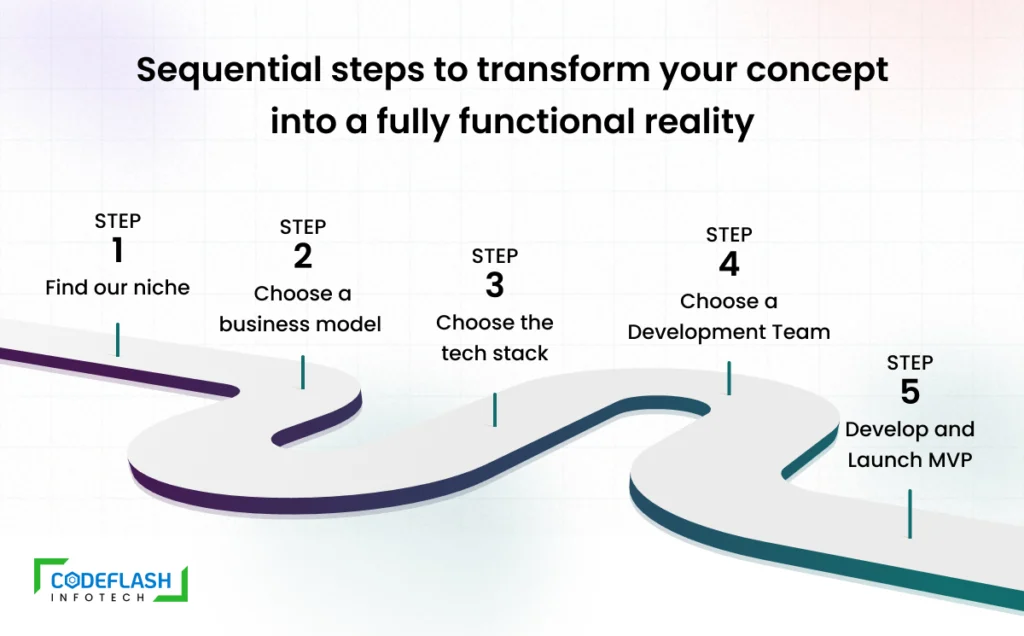
How to Develop a Dating App like Tinder
17 NOVEMBER
In their Eleanor Rigby song, The Beatles crooned, “Ah, look at all the lonely ones. The method people use to locate soulmates has evolved significantly since the 1960s, among some statistics:
- Over 27% of committed relationships start via the Internet.
- Around the world, roughly 40 million individuals use dating apps and websites.
- The annual revenue of all dating apps is estimated at around $2 billion.
- Being the most popular dating app, Tinder counts around 50 million users across the globe, while 60% come from the U.S.
- Tinder’s estimated value stands at approximately $1.6 billion.
Her things. Despite Tinder’s revolution in 2012, the market for dating apps is still active.
Below, we’ll explore Tinder’s key features, matching algorithm, and revenue model. But there’s more: a step-by-step guide for Ultimate Guide to Developing a Tinder-Like Dating App awaits.
Current Dating App Statistic
As previously stated, current technologies have fundamentally altered how we meet potential partners, and internet dating is no longer frowned upon.
A short review of the industry for dating applications and consumer demand is expanding. Therefore, it is the ideal moment to Develop a Dating App like Tinder. And in this situation, you ought to emulate business titans like Tinder.
Let’s now study how to Develop a Dating App like Tinder.
What are Tinder's Main Features?
As mentioned earlier, Tinder’s global recognition is attributed to its gamified swiping approach. Swiping right expresses interest, while left signals disinterest. Now, let’s delve into Tinder’s features.
Tinder leverages social media for login, allowing users to access the app through Facebook or Instagram accounts. Additionally, users can connect their Tinder profiles to Facebook and Instagram, bolstering platform trustworthiness through social authentication.
Geolocation – Tinder uses Users’ whereabouts’ to determine which social venues such as bars, coffee shops, etc.—they frequent more frequently. Only when the app user departs that location, do other users who have visited that location receive a notice.ITinder utilizes geolocation and user preferences to enhance matchmaking. The algorithm compares new user profiles with existing ones, ensuring better compatibility. It adapts based on user behavior, like removing unpopular venues from the match suggestions.
- Tinder’s algorithm is in action.
- The software ranks individuals based on their beauty using the score.
- The software tracks how many users have liked (or swiped right) a person’s profile.
- The user’s score increases with the number of likes.
- Other users of the app who have a similar number of likes are shown their profiles.
- As a result, the software selects matches from its user base.
Discover matches – Users can provide search parameters such as interests, age, gender, and more. The software then matches users whose profiles they both like.
Creating a profile – Users of Tinder may modify their profiles to appear more appealing and trustworthy.
Notice through push – Users get push notifications when the app algorithm discovers a good match.
Chat in private – Users may communicate in the built-in spontaneous messaging when the software finds a match.
Now, it’s essential to acquire the knowledge of Developing a Tinder-Like Dating App.

Are you crafting your dating app?
Step 1. Find our niche
Start by choosing a niche in dating apps. Stand out by catering to specific preferences like dietary choices (gluten-free, vegetarian, vegan) often overlooked in everyday encounters.
Example:
“Gluten-Free Singles” is a dating platform exclusively for gluten-free individuals, connecting them for dating, friendships, and shared activities.
Preferences in lifestyle
People have diverse preferences for their ideal home. Some love bustling cities, while others cherish rural tranquillity. Similar lifestyle choices might provide a strong foundation for relationships.
Example:
Horseback Cupid – This horse and country-themed dating service is the ideal location to meet a cowboy or cowgirl. The equestrian Cupid brought together millions of individuals who despise crowded cities and yearn to live in the country. If people share the website’s practical ideals, they can sign up even if they don’t own a horse.
favorite animals – Another topic that could unite individuals is their favorite pets. While some of us like dogs, others adore cats. Consequently, you may base your dating app on users with similar animal-related interests.
For instance, personals. Cat lovers may connect on this dating service and find love while chatting about their cats.
So what comes next?
Step 2. Choose a business model
Tinder and other dating apps employ a variety of business methods to generate revenue:
- high-end business strategy
- Users can purchase a premium app version with the following additional capabilities in addition to the basic app features that are provided for free:
- Increasing profile. The software charges users a predetermined fee for their profile to appear first in the search results.
- Swipe before you tap. This feature, powered by a machine learning algorithm, modifies how people view photos.
- What kind of technologies does it use? The sophisticated algorithm alters user photos to reflect the preferences of other people.
- The owner of a premium account will thus have more opportunities to match.
- Unrestricted Likes. Users of the paid-for edition of the app have an infinite number of right swipes or likes, but free users have a restricted quantity.
The following are other ways to monetize apps: in-app purchases
It’s fun for app users to be able to send and receive presents. To do this, promote your software with bought gifts like greetings, bouquets, and kisses.
Many applications use this monetization strategy. You may charge other businesses to have their ads appear on your app. These might be cost-per-click or cost-per-mile models.
Step 3. Choose the tech stack for a Tinder-like app
When selecting project technologies, prioritize scalability. Ensure your chosen tech stack can seamlessly grow and adapt as your project evolves.
However, why does it matter?
As we consider Tinder as an illustration:
Since the app’s launch, the MongoDB NoSQL database has been used by the Tinder developers to match users. However, as the software grows in popularity and user base, the team needs help controlling MongoDB database performance. The team had to switch to Amazon Web Services’ more robust hosting.
Consider using the Tinder technology stack for your dating app in light of this.
Finding some mobile app developers is now necessary.You can consider hire a mobile app developers from Codeflash Infotech
Step 4. Choose a Dating App Development Team
You should take into account the following factors to choose the finest app development team from the many possibilities available in the mobile app development market:
Hourly Rate for Developers – It is no secret that different countries have different hourly rates for developers. They could share similar educational and professional experiences at the same time. Therefore, consider working with developers from other countries to reduce development costs.
Portfolio – When selecting a Custom Dating App Development Company consider their portfolio Explore Codeflash Infotech’s portfolio for a better understanding of our capabilities.. With this approach, you may learn more about the company’s level of expertise. It would also be wonderful if the mobile app developer had dating apps in their portfolio.
The customer engaged us to rework, debug, and update the MVP for the new market. The team designed a fresh design, corrected problems, and remastered the code for this project.
Former clients – Request a list of recent clients from the mobile development team. You may discover more about your potential developers’ dependability, dedication, and communication abilities by getting in touch with them.
Consider team size – Go big for enterprise-level solutions, and opt for 1-2 mobile developers for an MVP. Tailor your team to project scale and goals.
Step 5. Develop and Launch MVP
The development team will begin the discovery (inception) phase after you’ve chosen them. The project requirements will be clarified at this stage, together with your business objectives and project prototypes.
- Social sign-in – Empower your app with sign-in via social networks like Facebook, Instagram, Twitter, or LinkedIn for a seamless experience. Estimated development time is 24+ hours
- User profile – Each user has a profile where one indicates interests and hobbies. Estimated development time is 12+ hours
- Geolocation – With this feature, the app users will choose the region where they want to find a soulmate and even choose nearby locations. Estimated development time is 8+ hours
- Matching – To make the matching process more accurate, use AI-based algorithms. Estimated development time is 45+ hours
- Chatting – Users can chat and get to know each other better when they have a match. Also, adding stickers and GIFs optionally is possible to make messages more vivid. Estimated development time is 6+ hours
- Push notifications – Push notifications will inform your app users about their matches. Estimated development time is 18+ hours
- Settings – Settings include main features like selecting by categories, on/off the sound, customizing different filters, etc. Estimated development time is 16+ hours
The Bottom Line
Investing in a dating app is a smart decision, but the process requires more than just financial resources. It demands expertise from your mobile development team. Wondering how to build a dating app and generate revenue? Discover valuable tips in our guide, ‘A Dating App Development Guide – Cost, Features & Types.’ Secure a skilled development team now to turn your envisioned Tinder-like app into a reality!





